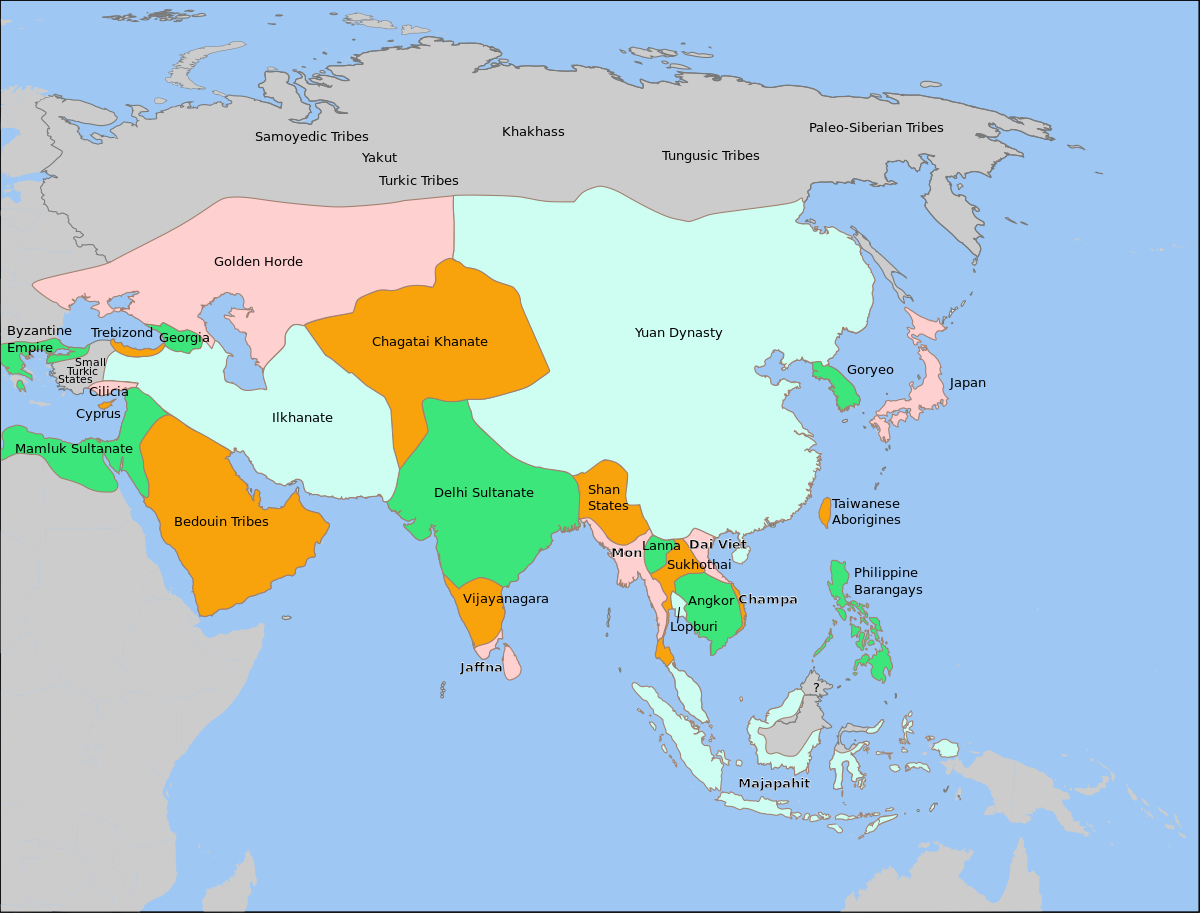
Turco-Mongol Tradition
The Turco-Mongol tradition emerged in Asia during the 14th century as a fusion between the ruling Mongol elites and the Turkic populations they conquered. These elites assimilated into Turkic culture, adopting Islam and Turkic languages while preserving Mongol political and legal institutions. After the collapse of the Mongol khanates, Turco-Mongols founded successor states, including the Kazakh Khanate, the Crimean Khanate, and the Timurid Empire.
Antecedents and Language
The Turco-Mongol tradition evolved from centuries of linguistic and cultural exchange between Turkic and Mongol peoples. The Mongol conquests brought about extensive Turkification of the Golden Horde, with the Kypchak language becoming the lingua franca. In the Chagatai Khanate, the Mongol elites adopted Chagatai, a Karluk Turkic dialect that became the precursor to modern Karluk languages like Uzbek and Uyghur.
Religion
The Turco-Mongols played a significant role in the spread of Islam in Central Asia. Uzbeg Khan converted the Golden Horde to Islam in the 14th century, and the Timurid Empire patronized Islamic institutions and symbols. Timur, the founder of the Timurid Empire, emphasized his Islamic identity to legitimize his conquests and styled himself a defender of Islam.
Cultural Influence
The Turco-Mongols became patrons of the Turco-Persian tradition, which blended Islamic and Persian elements. They carried this culture to South Asia, Central Asia, and the Middle East, where it became the dominant culture of the ruling classes. The Timurid Empire, in particular, played a key role in the development of Persian literature and architecture.
Legacy
The Turco-Mongol tradition left a lasting legacy on the history and culture of Eurasia. It shaped the political, linguistic, and religious landscape of Central Asia and beyond, and its influence can still be seen in the cultures of modern states like Kazakhstan, Uzbekistan, and Turkey.